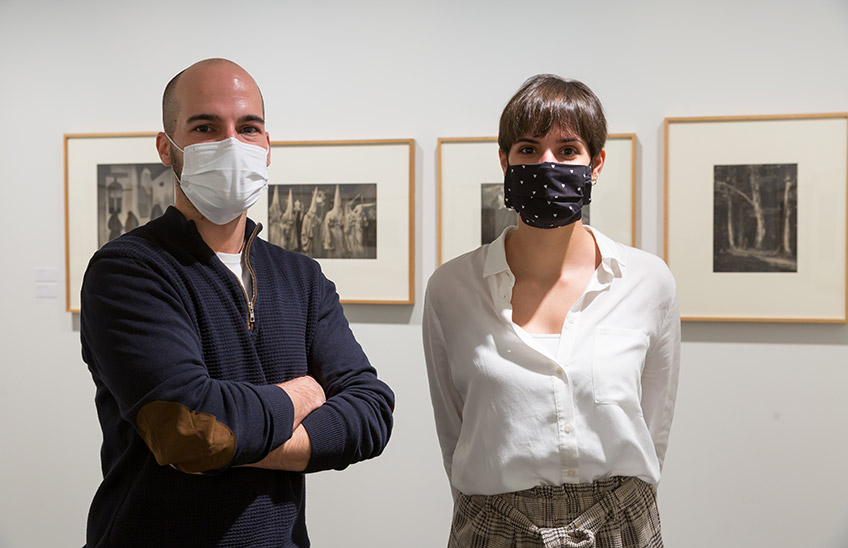The Museum, from the inside: the experience of two graduates of the Master in Curatorial Studies in the curatorial area.
Irene Hernández and Manuel Gamaza have worked for a year in this department and learned different tasks related to the Museum's Collection and exhibitions.

PhotoManuelCastells/Manuel Gamaza and Irene Hernández, MCS alumni, in the Ortiz Echagüe Space of the Museum.
20 | 08 | 2021
During the last twelve months, Irene Hernández and Manuel Gamaza, graduates of the 2nd Promotion of the Master's Degree in Curatorial Studies at the Museum, have been part of the Museum's curatorial team. Thanks to a scholarship from the University of Navarra, the young people, with studies in Fine Arts and Art History, respectively, have had the opportunity to get to know and learn from the inside different tasks for the management and exhibition of the Collection and exhibitions.
Among them, "digitizing the collections, inventorying, cataloging and managing the database and assisting in the assembly and disassembly of exhibitions such as those of Vik Muniz, Luis Gordillo and Ana Teresa Ortega," says Hernandez. Precisely, these assembly and disassembly tasks have been one of the most enriching experiences for the young curator, together with the opportunity to "meet the artists and curators and be part of the huge team that works until the last minute to make the exhibitions perfect".
For her part, Gamaza explains that "from the beginning of the course, students are allowed to rotate through the different departments of the Museum as part of the MuseoLab course. In this sense, continuing my further training here was a great opportunity to learn about the internal processes of each of the areas, as well as to deepen my knowledge of the tasks of the curatorial department, in direct contact with art.
Following the philosophy of the master's degree, based on the learning by doing (learning by doing), the two graduates agree on the importance of being able to continue learning in the field. "I have been able to put into practice the theoretical part I acquired in the master's degree but, above all, I have learned how a museum works on a daily basis and this experience has given me greater self-confidence," says Hernández.
In this line, Gamaza values that "it has been very enriching and the experience gained, total. Perhaps what I have enjoyed most has been the contact with the artists, with other ways of thinking and communicating. And working on the whole process of an exhibition, of course, being aware of the important collaboration with other areas of the Museum.
Both recommend this experience to future students of the master's program, as it complements very well the training acquired in the postgraduate program. "Working in a museum for 12 months is offered in few places. It is a unique opportunity," said Hernández.